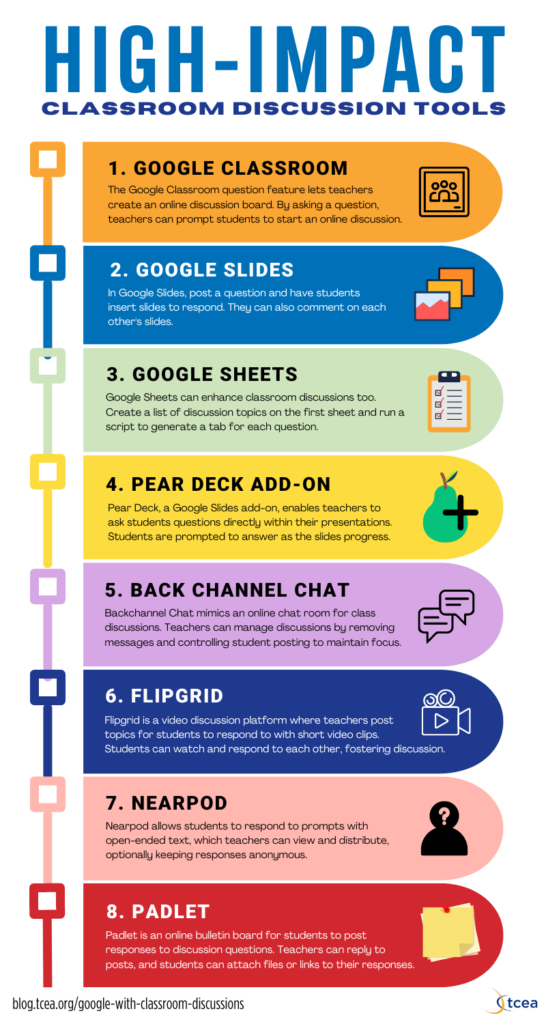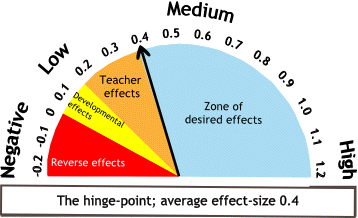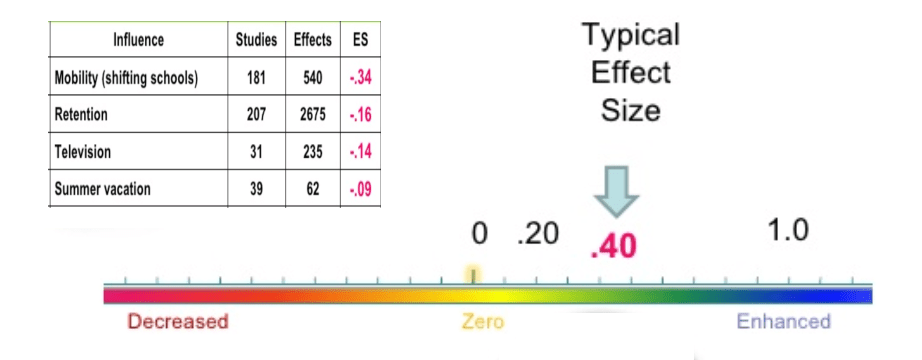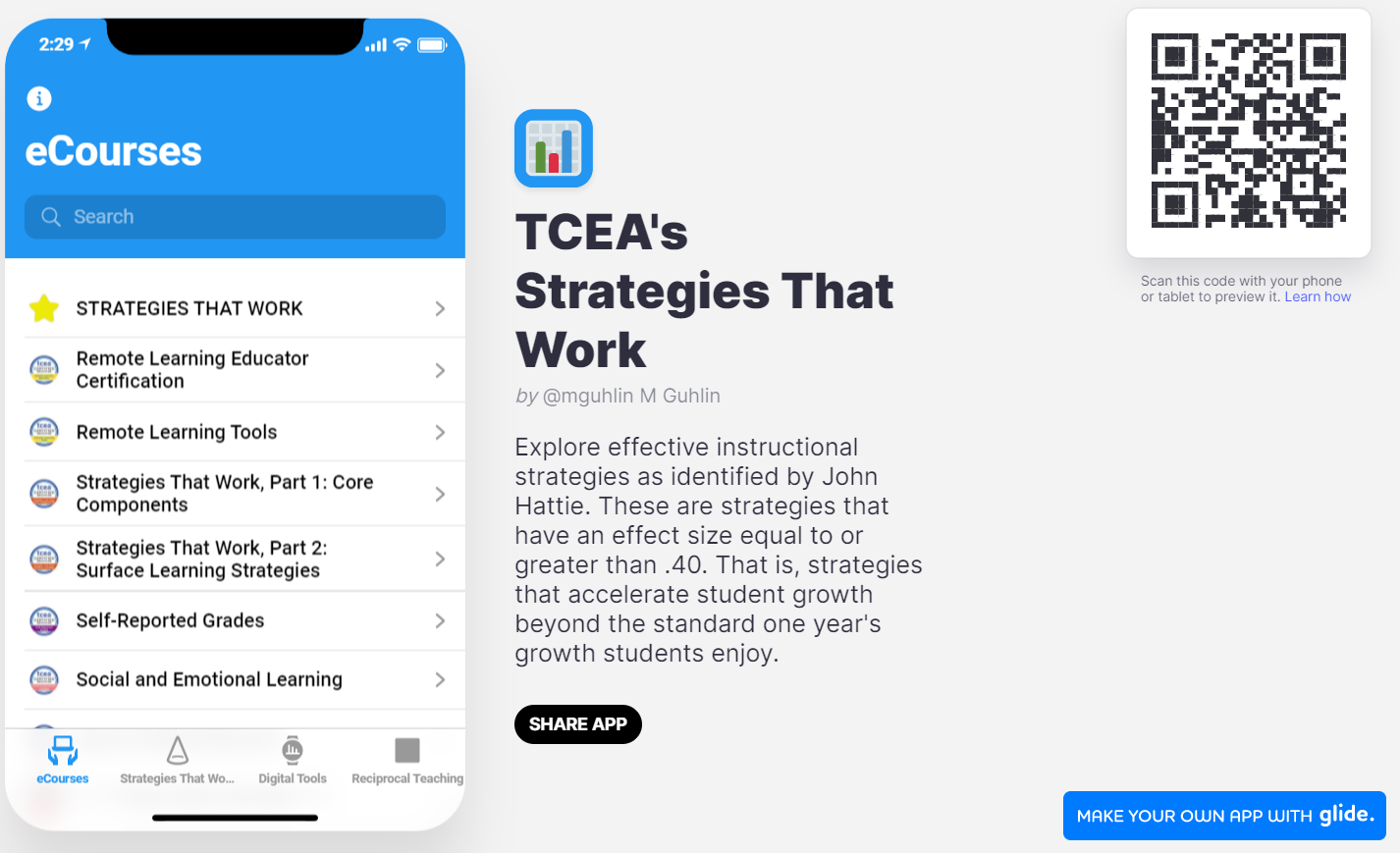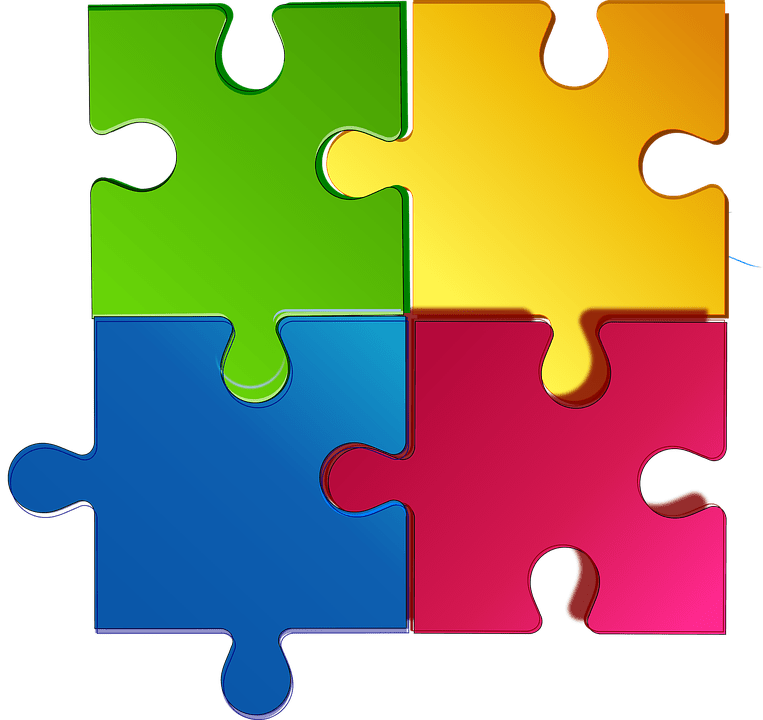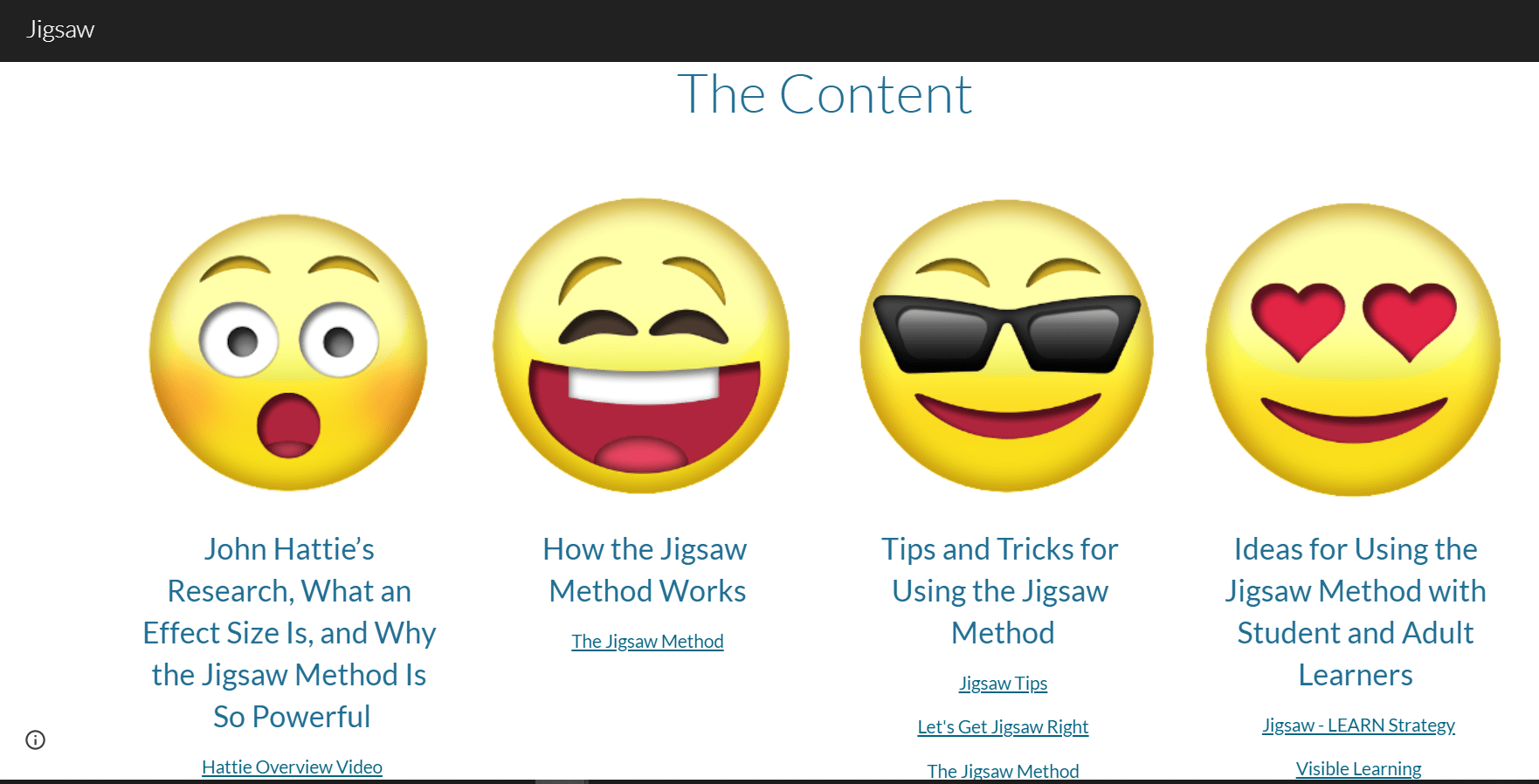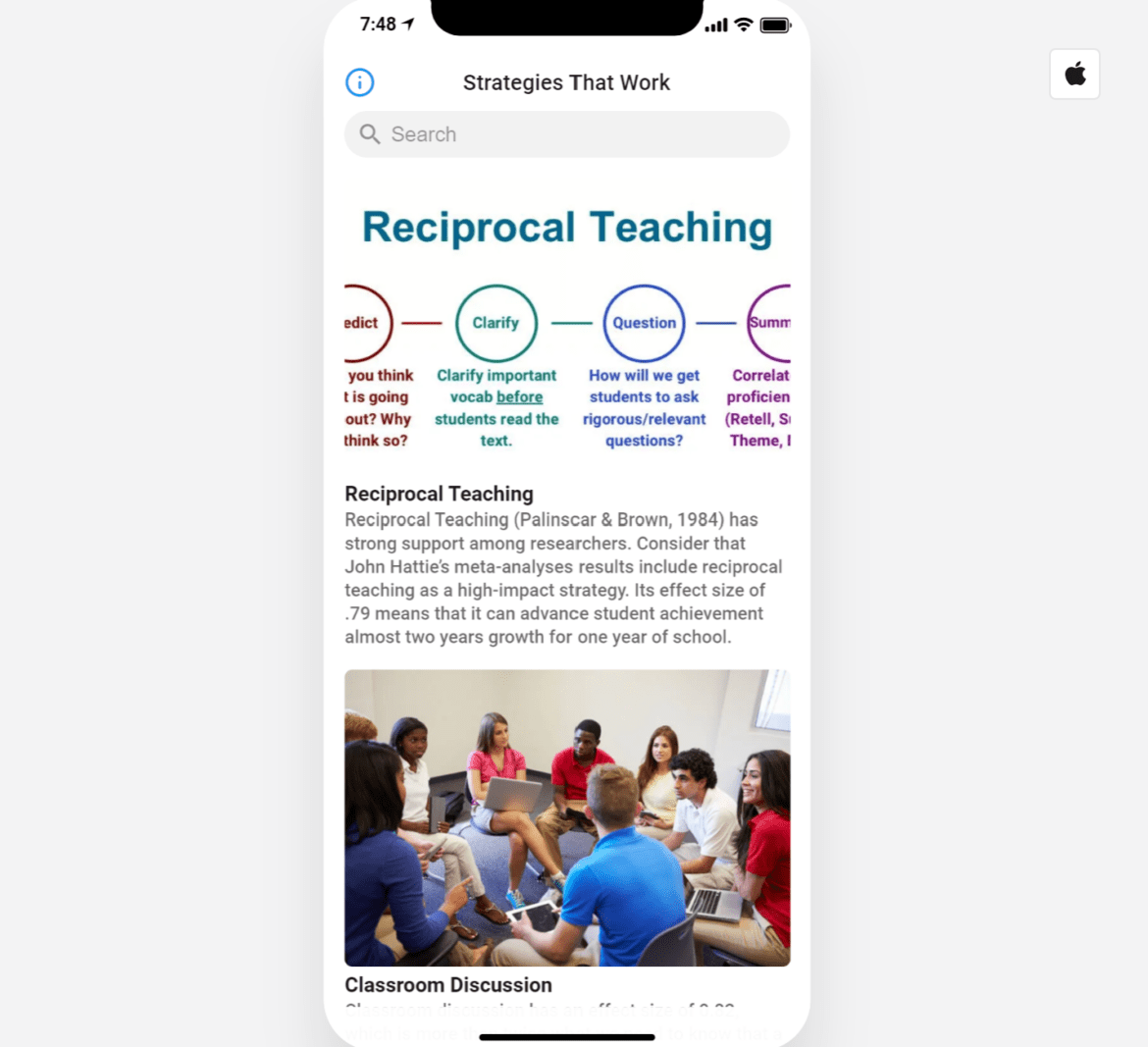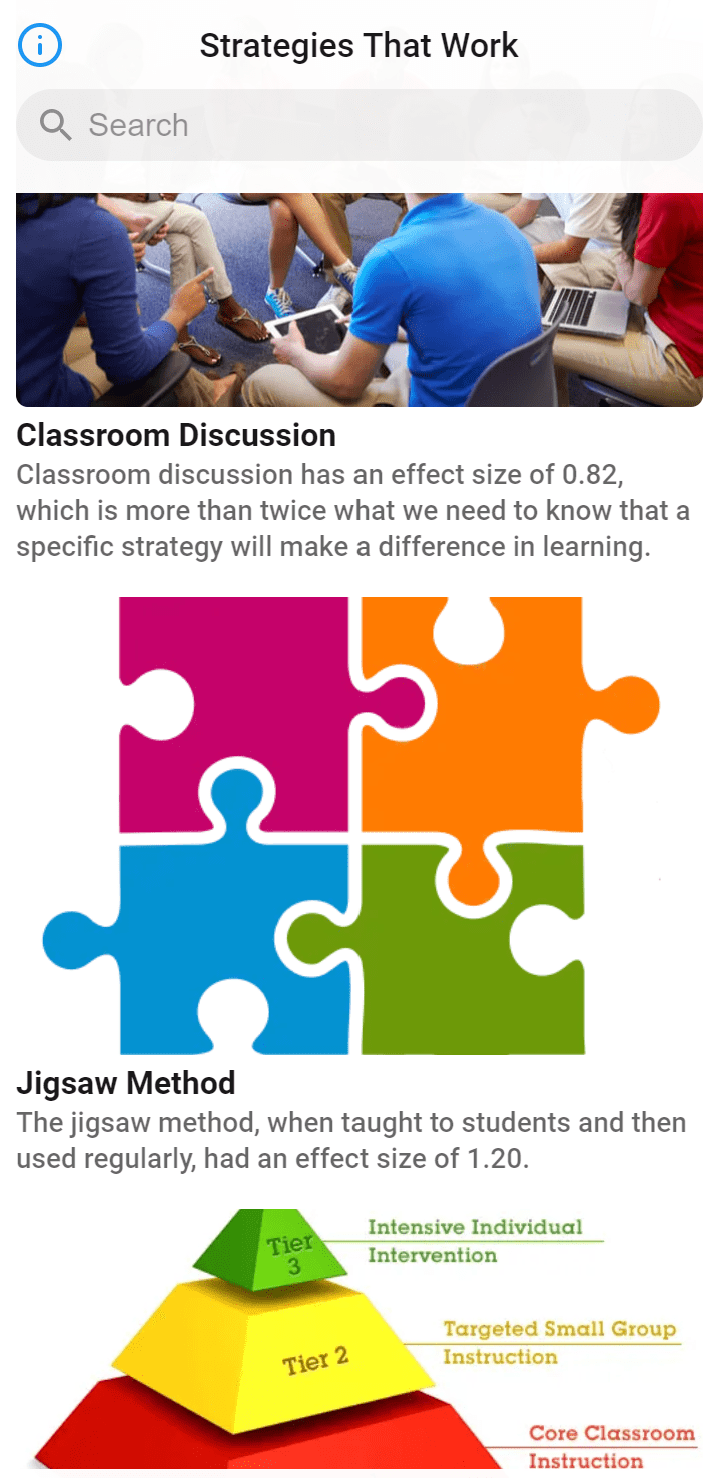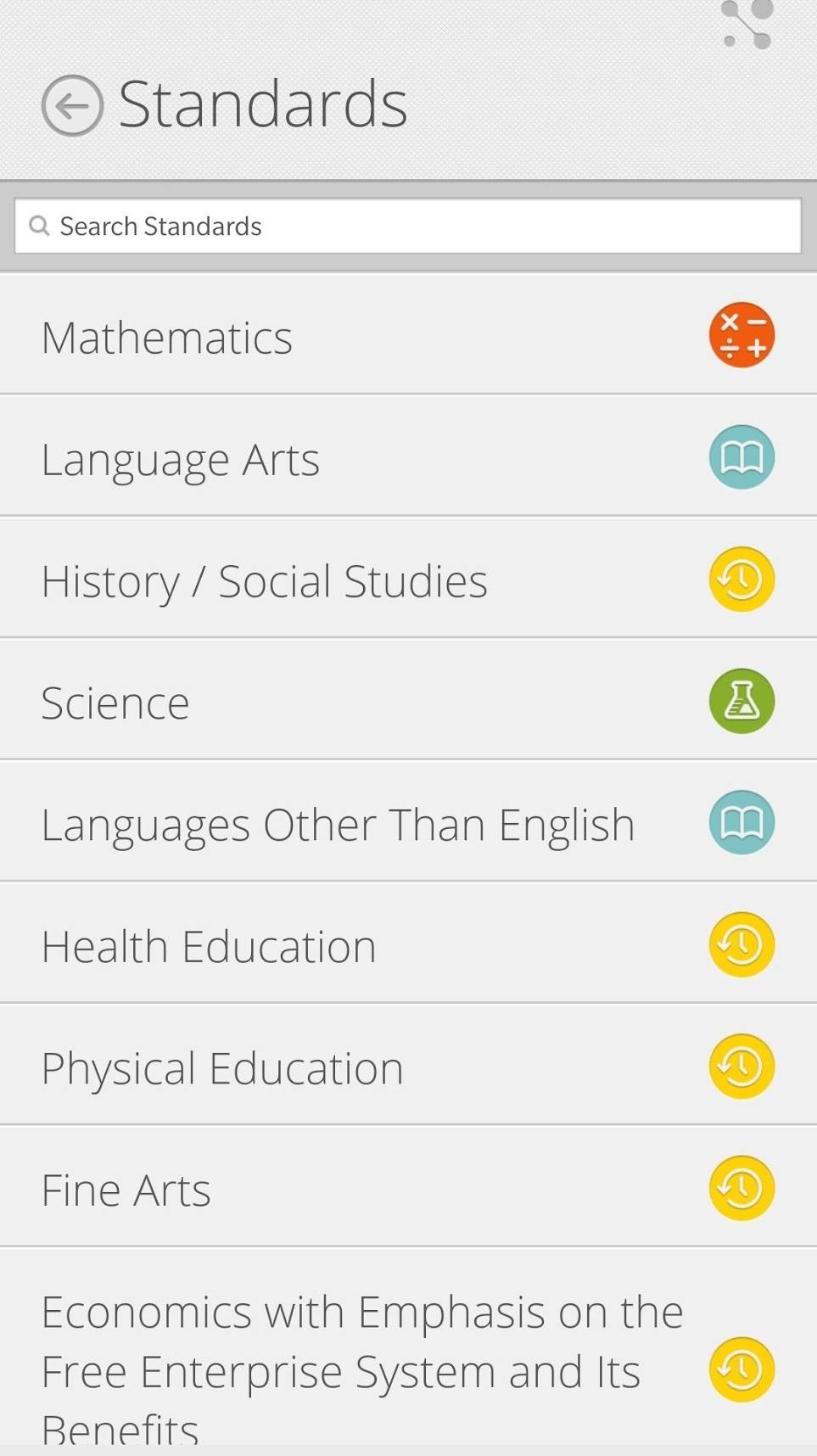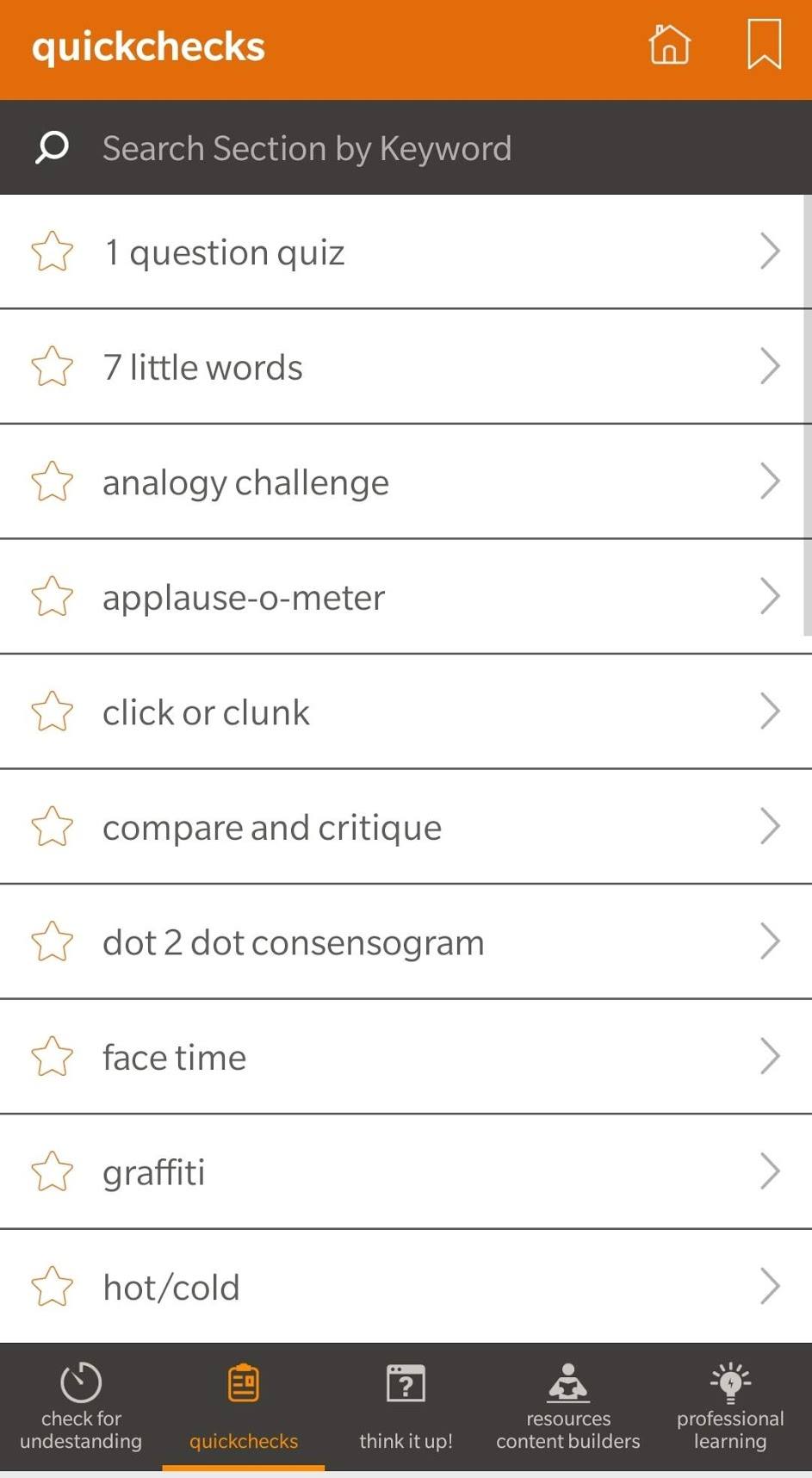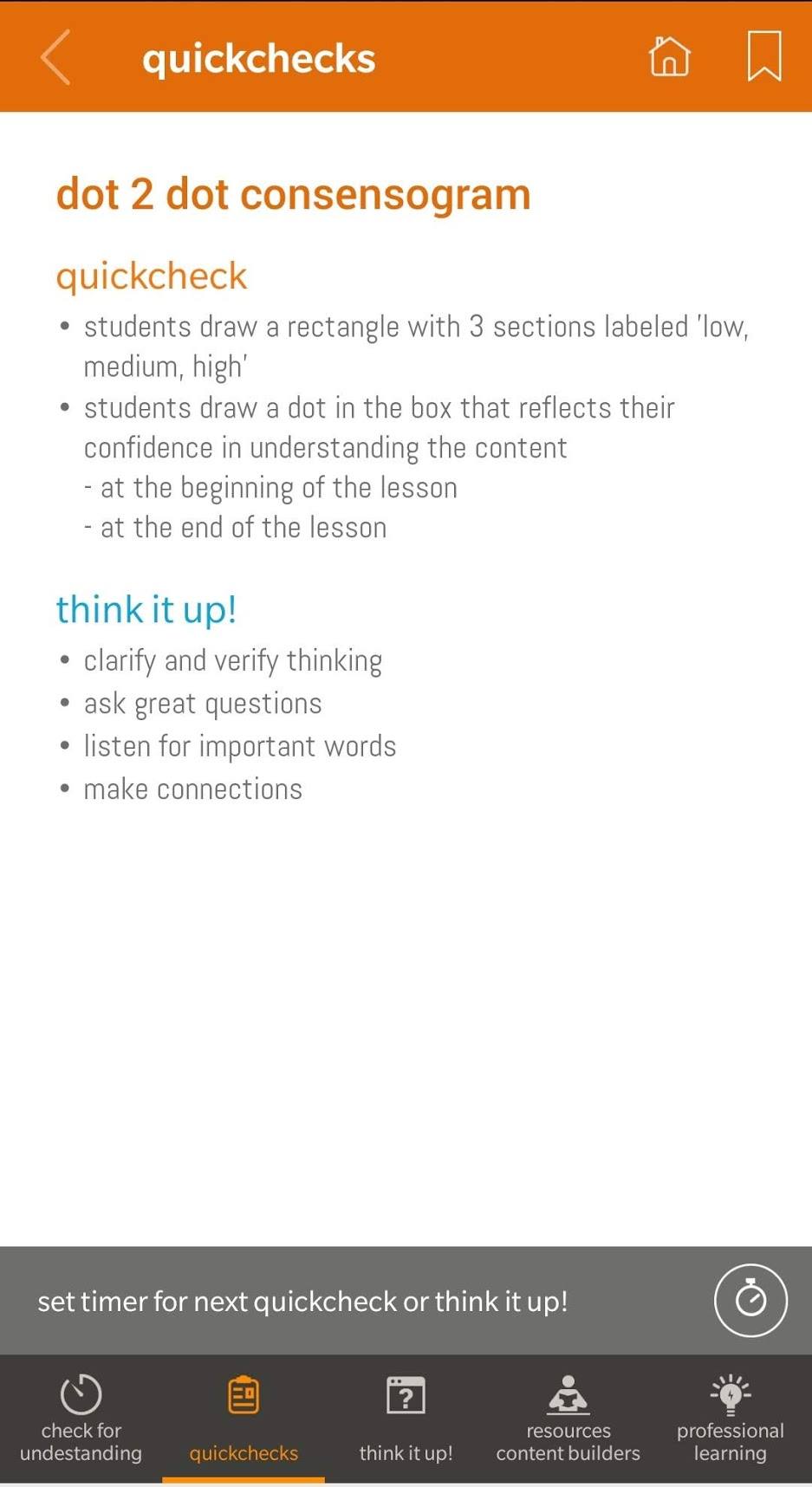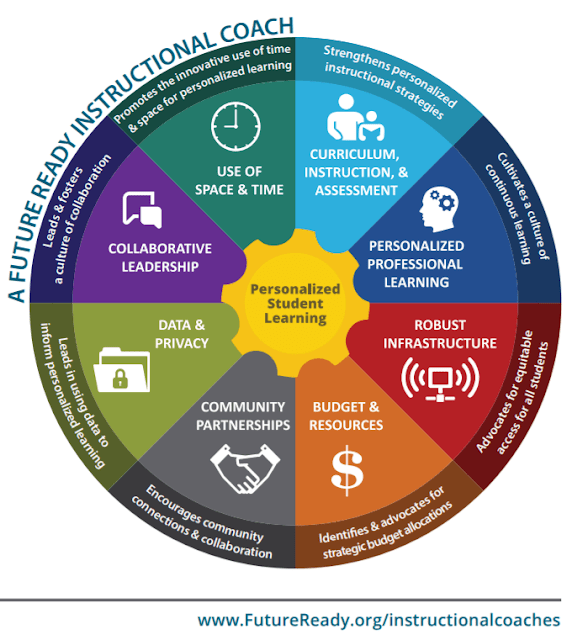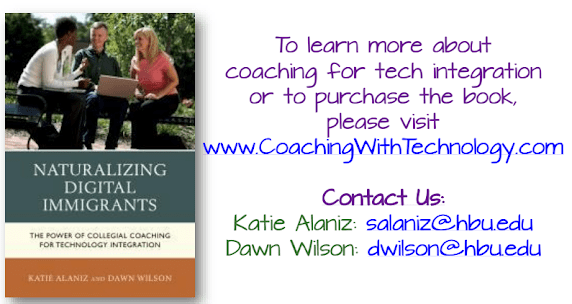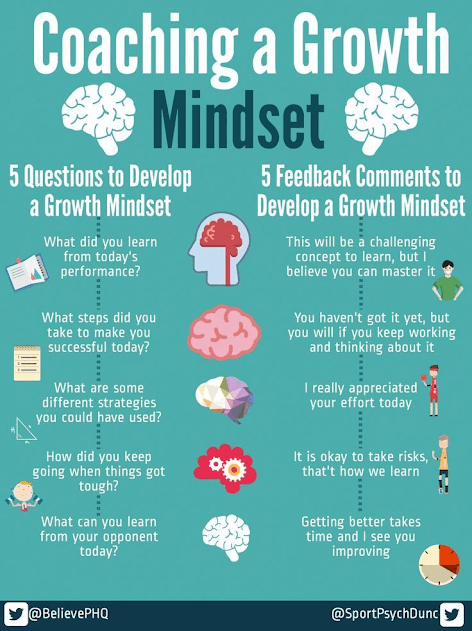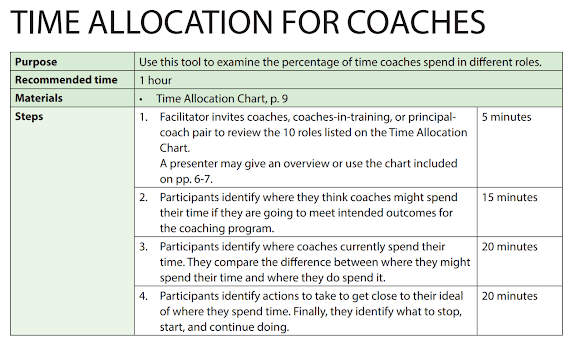How do you coach for high-effect size instructional, technology-enhanced strategies? In the first three parts of the Coaching for Results series, we explored coaching models. We also spent time clarifying vocabulary. In this blog entry, I will share five action steps to achieve accelerated student growth.
Reviewing the Components
Think of the components as reactants in a chemical formula that results in a product. The product? Accelerated student growth. It might look like this:
HESIS + STI + SCC –> Accelerated Student Growth
The fusion of the three reactants yields accelerated student growth. Isn’t that amazing? Of course, it’s not as simple as a chemical formula. The three components that must combine include the following:
- High-Effect Size Instructional Strategies( HESIS). Describes evidence-based strategies highlighted in John Hattie’s research. Static info on the strategies leaves you looking at what worked in the past. The latest, best source of fresh insights is online. Instead of books, use Corwin Publishing’s Visible Learning MetaX database. It’s an interactive database that allows you to pull up the HESIS and supporting research.
- Strategic Technology Integration (STI). Addresses the use of ed tech tools. Those can include many available now, such as EdPuzzle, Padlet, G Suite EDU, Microsoft EDU, etc. The goal of these is to “elevate” the HES Instructional Strategies.
- Pupil-Centric Coaching Efforts (PCC). Diane Sweeney (@Sweeney_Diane) suggests instead of starting with teachers, we begin with students. It’s a powerful shift in perspective from traditional coaching. To do that, Diane includes a results-based coaching tool (view Google Doc version). The tool provides an excellent model to follow.
Innovation flourishes at the juxtaposition of ideas, so let’s put these ideas together.
Action Steps Overview
As you know, Weston Kieschnick (@Wes_Kieschnick) inspired these steps in his book Bold School. To get a greater effect, I’m going to suggest we include some of Diane Sweeney’s work on coaching tools. There is quite a bit of overlap in Diane’s and Wes’ approaches, so it makes sense to combine them.
Action Step #1: Develop and Pre-Assess Learning Outcomes
Focusing on learning outcomes enables both teacher and coach to develop student-centered goals. What’s more, focusing on learning outcomes lets you connect to standards-based goals. Weston suggests several questions. One of the important ones is What priority standards will you focus on? If you were going to write these as “I can” statements for students, what would they look like?
Tip: Avail yourself of resources for the standards. These include The TEKS Resource Center, the TEKS, and the ISTE Standards for Students.
It’s worth pointing out that the effect size of the Teacher Clarity Goals is d=.75. This makes Teacher Clarity a core teaching factor that influences learning. Unlike other high-effect size (HES) instructional strategies, it affects everything you do. Here’s an example of Teacher Clarity for this blog entry:
- What am I learning today? A process for combining research-based instructional strategies with technology tools to achieve standards-based learning. Follow up with how to best coach (and be coached) in a pupil-centric classroom.
- Why am I learning this? Knowing how to integrate technology into effective, evidence-based strategies to achieve curricular objectives is critical. Knowing how to coach and be coached in this process is important. The more we all know, the better.
- How will I know that I have learned this? I’ll be able to apply effective strategies, educational frameworks, and pupil-centric coaching (PCC).
Note that clarifying these goals in a consistent way can impact students. Do this for every lesson, and your students will gain almost two years of growth in one year. Isn’t that incredible? Some educators craft these in shorter statements that begin:
- Today we will…
- So we can…
- We will know we have it when…
As you identify desired academic goals, Diane Sweeney recommends collecting some baseline data. She suggests you assess who is proficient, almost there, or below. You can use a variety of pre-assessment instruments (including ed tech tools that make this easier).
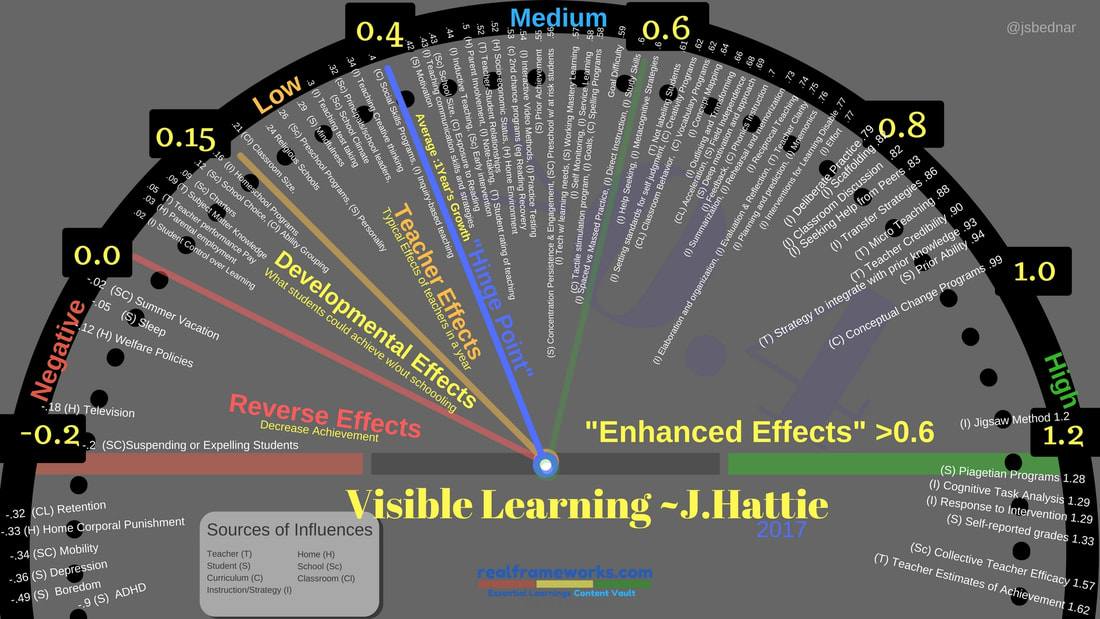
Note: Effect sizes displayed in the chart above have been updated in the Visible Learning MetaX database.
Action Step #2: Select Your High-Effect Size Instructional Strategy
In this action step, you will reflect on the academic standards and skills you want students to know. Weston suggests asking questions that are quite practical. For example, which specific HES instructional strategy will you leverage to meet goals? Diane poses a relevant question of “What instructional practices will help students reach the goal?” Two follow-up questions Weston suggests include:
- What will I as the teacher be doing?
- What will students be doing?
For example, the teacher may rely on direct instruction (effect size of .59). In regards to the second question focused on students, we have to ask which strategy works best? High-effect size strategies fall into several categories. Understanding these may assist you in selecting one.
Approaches that help students’ surface-level learning may not work for deep learning. This is true in reverse (deep learning strategies may not work for surface learning).
Match the right approach with the appropriate phase of learning. – Hattie, Fisher, and Frey (Visible Learning for Mathematics, 2017)
These are organizational categories for educators, but they are more to students where they serve as stages of learning. Click the strategy to learn more about it.
- Core factor. These include strategies that affect everything about a lesson. Some sample strategies include:
- Teacher Credibility (1.09)
- Success Criteria (.88)
- Teacher Clarity (.76)
- Spaced (vs. Massed) practice (.65)
- Feedback (.64)
- Surface Learning. At this stage, you introduce students to concepts, skills, and/or strategies. Think of it as building a strong foundation. Strategies seek to help student gain requisite knowledge needed to move forward to deep learning. Some sample strategies include:
- Jigsaw Method (1.20),
- Summarization (.74),
- Direct Instruction (.59)
- Explicit Teaching Strategies (.57)
- Flipped Classrooms (.58)
- Interactive Video (.54)
- Deep Learning: In this category, strategies assist students gain a deeper conceptual understanding. A few favorites include:
- Reciprocal Teaching (.74),
- Classroom Discussion (.82)
- Outlining and Summarizing (.66)
- Concept Mapping (.64)
- Metacognition Strategies (.58)
- Transfer Learning. As you might imagine, students must finally apply what they know to new scenarios and contexts. Students should also be metacognitive, reflective on their learning. Strategies that typify this include the following:
- Strategy to Integrate with Prior Knowledge (.93)
- Transfer Strategies (.86)
- Problem-Solving Teaching (.68)
- Service Learning (.58)
- Peer Tutoring (.53)
Gaining a deeper understanding of high-effect size instructional strategies can be difficult. Remember to come back to the two questions by asking yourself, “What will you and your students be doing in the lesson?” This will assist you.
Also, you should keep your use of strategies simple. For example, as teacher you may choose to use Direct Instruction or Explicit Teaching. Use these to answer the first question, “What will the teacher do?” and then map out what you will do. To answer the second question (student), consider whether this is concept/skill focused. Select a strategy from the surface learning category. If it’s deep learning, use one of those strategies. Once you have decided on what you will be doing and what students will be doing, you’re ready for Action Step #3.
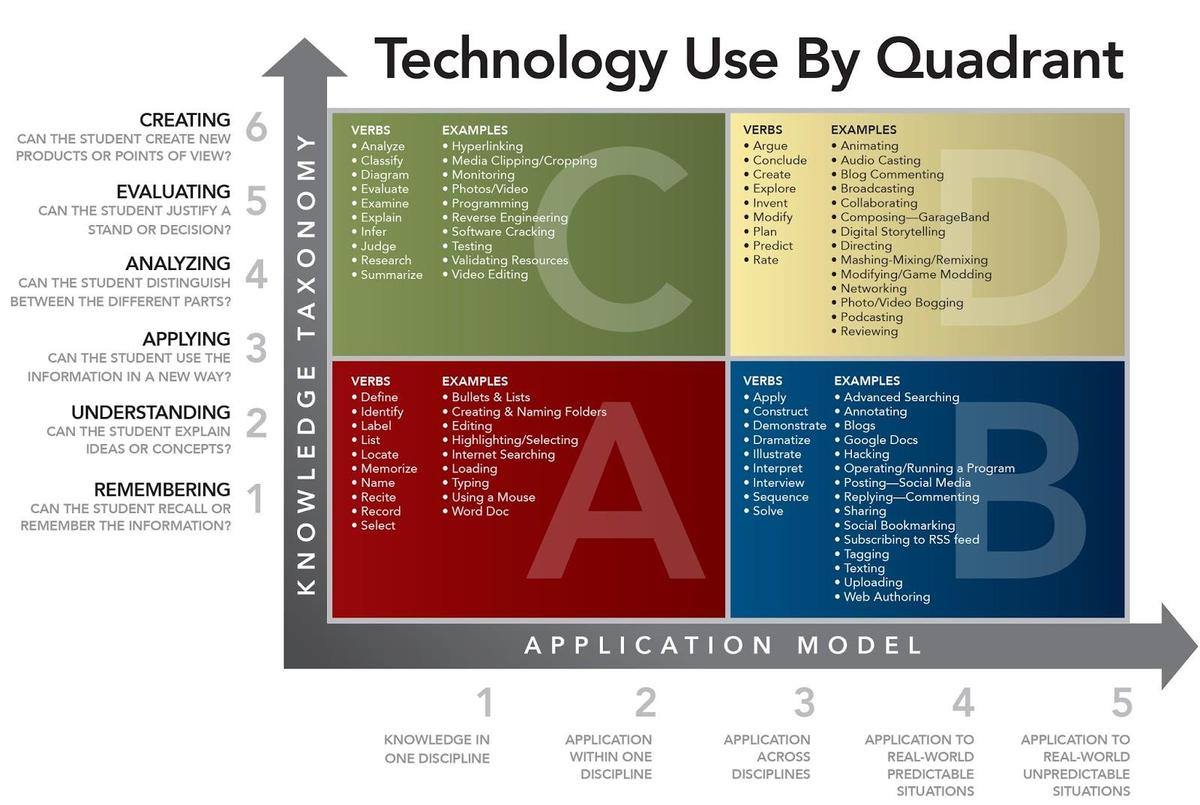
Action Step #3: Decide on the Digital Tool(s)
Was the temptation to jump to Action Step #3 overwhelming? For ed tech advocates, the rush to select a digital tool is strong. So many tech tools are available now, it’s tempting to use as many as possible. To better explore this, you’ll find several sections below. Those include 1) Finding Free Tools; 2) A Quick Example; and 3) Coaching for Digital Tools. Let’s begin our exploration.
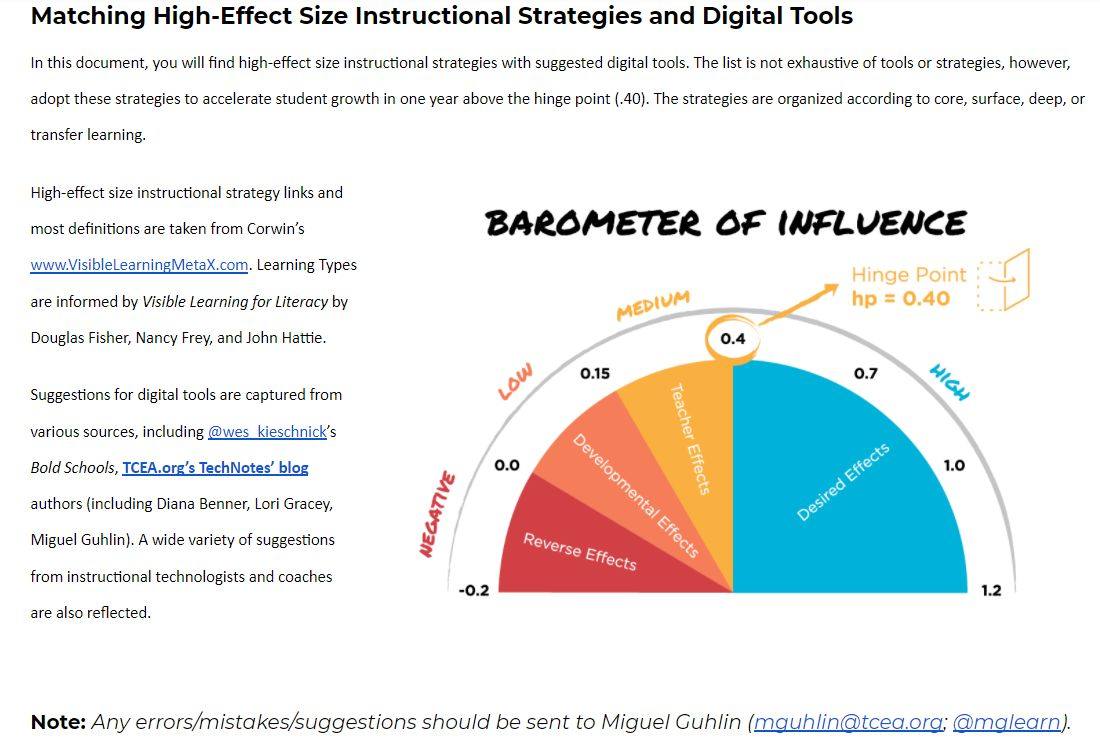
Get the Google Doc that matches high-effect size instructional strategies
with technology tools
Finding Free Tools
Which tech tool best aligns to a chosen high-effect size instructional strategy? While I have some suggestions available (which appear in Part 5 of this series), check these ideas out:
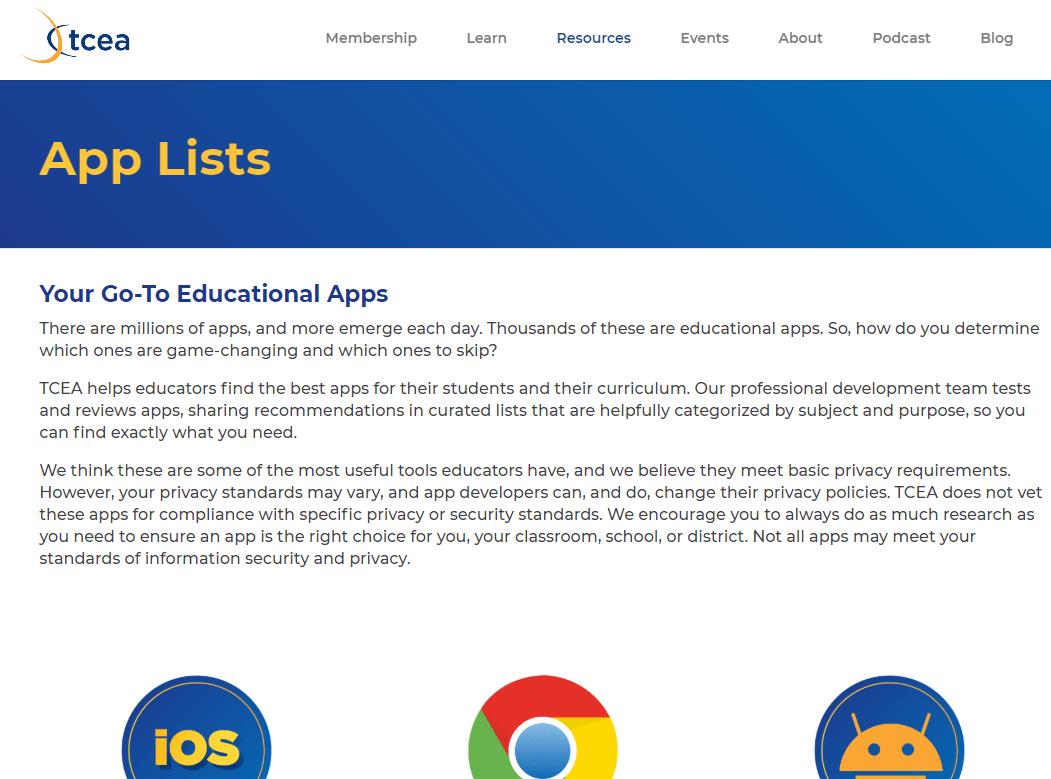
1. TCEA App Lists. How do you determine what apps are game-changing and which should you skip? Check out this collection of apps. You will find an iOS, Chrome, and Android app list.
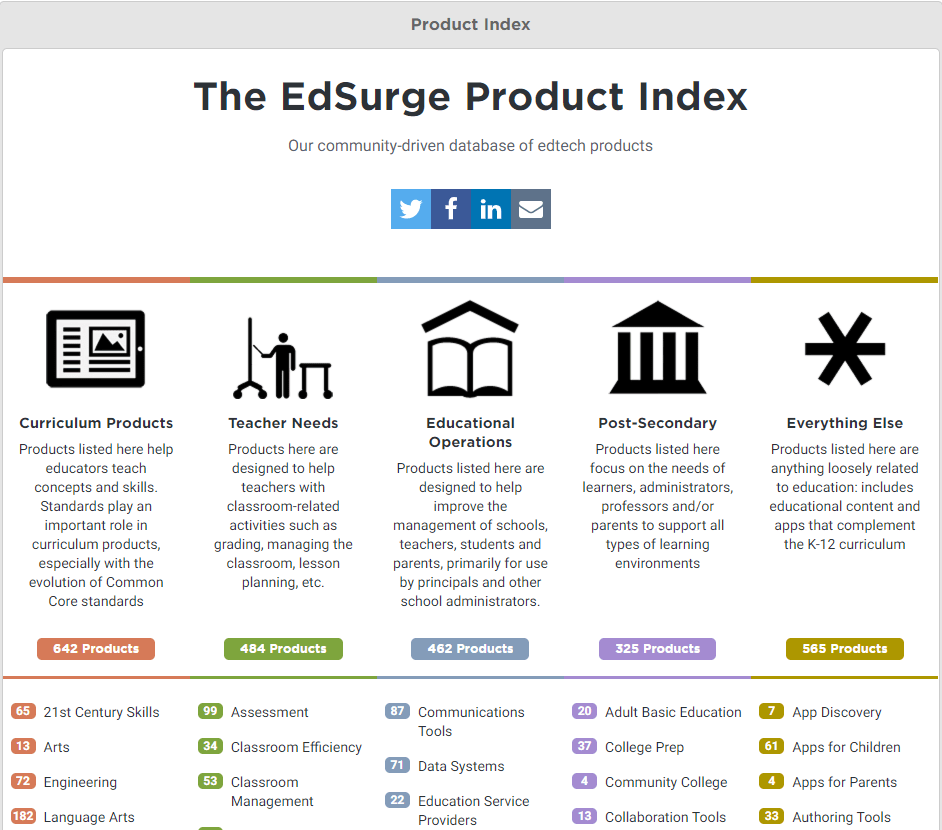
2. EdSurge Product Index. This community-sourced database offers quite a lot, including a list of classroom-related activity software, apps, and more.
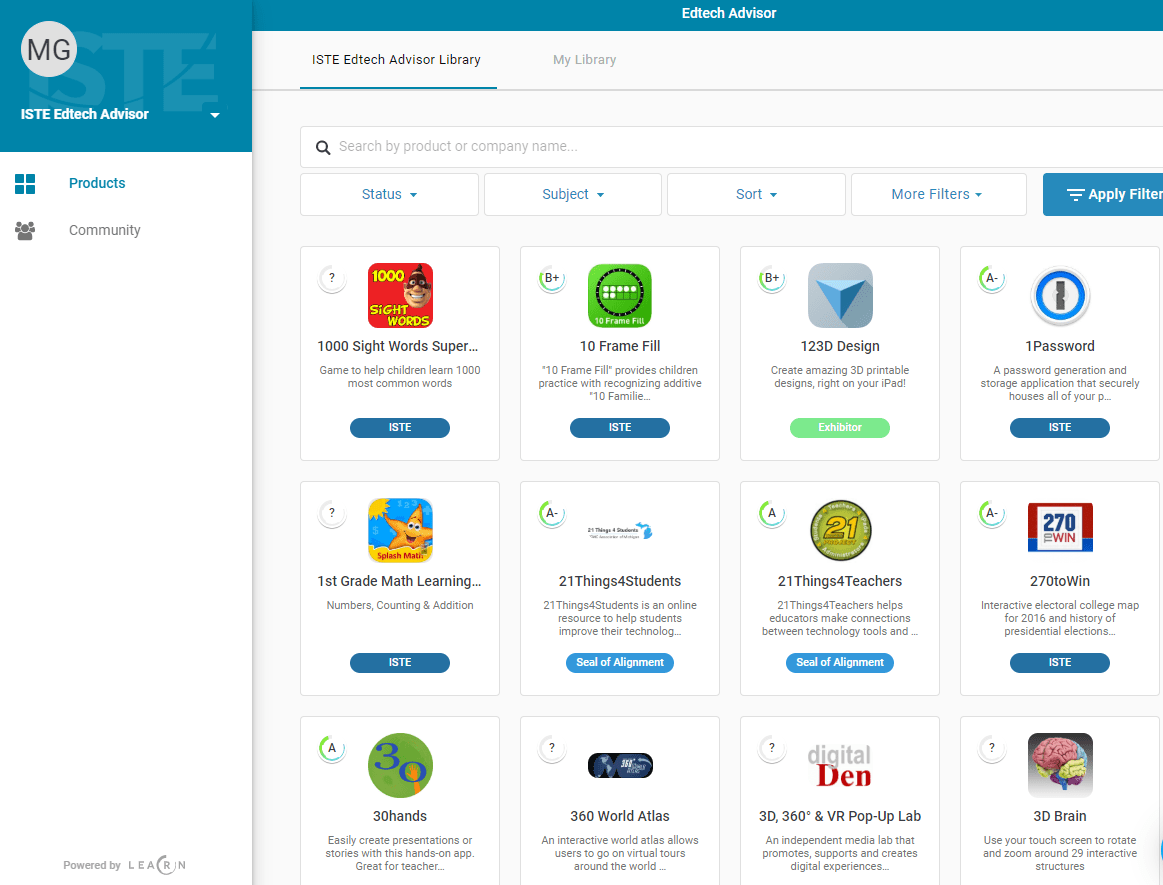
3. EdTech Advisor. This exclusive platform curates new digital tools and aligns them to the ISTE Standards. You can find digital tools (e.g. apps) via a search dashboard that also allows you to search by grade level, product type, and more.
4. Miguel’s List of Free Tools. Want to find free digital tools? Check out my free resources. They include Free Resources for Teachers and Free News Sources. Also, Copyright-Friendly Media includes a list of free tools, apps, and websites. You may want to read this blog entry, Buncee-Based Learning, to see how to match one strategy to a digital tool.
The challenge isn’t finding digital tools. It’s knowing how they “elevate,” as Weston K. points out, a HES instructional strategy. A bit of wisdom: You may want to unleash many HESIS and digital tools. Resist the temptation. Choose just one strategy for students and look for technology that makes it better.
In Part 5, I will share a lesson that aligns to each of the action steps. For now, let’s take a look at an easy one, a digital tool many of us have access to, multimedia slide decks. Multimedia slide deck tools abound. Some you may be familiar with include G Suite EDU, PowerPoint, Buncee, and Prezi.
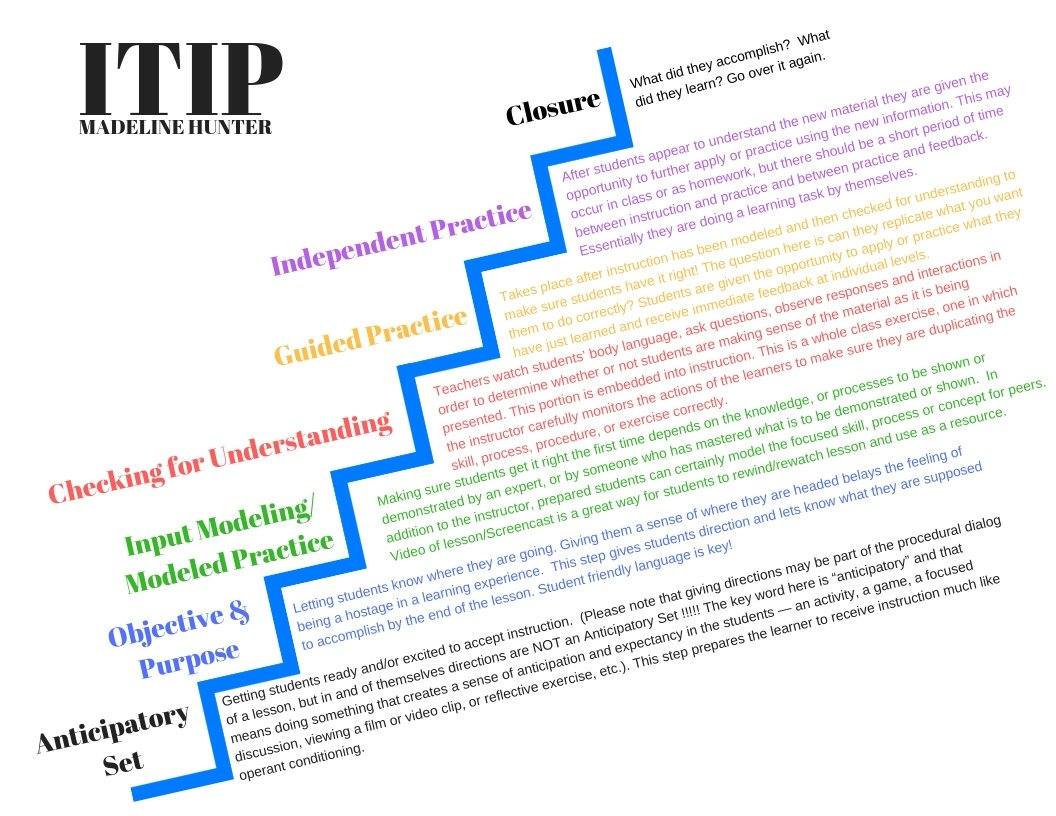
Source: Joel Bednar (@jsbednar) Tweet
A Quick Example
Use a multimedia slide deck in two ways. For the teacher, you can use it as a way to organize information for direct instruction. With direct instruction, you present material in a straightforward, sequential manner. You control the content or skill. This works great as a way to introduce students to fresh ideas they may have no or little prior knowledge about. That makes it a great surface learning approach.
For students, you want to give them a systematic approach to understand the content. With a textual passage, summarization would work. Again, students are learning about new information unfamiliar to them. They summarize the main ideas of a text (fiction or non-fiction) in audio format. Then put the text excerpt on the slide. Their summary may appear in slide notes. To the slide, they add audio.
Summarization enjoys a learning effect size of 0.74, which accelerates student growth. Students can also include a variety of media that expand on their summary.
Coaching for Action Step #3
An instructional coach can play a key role in narrowing down both the HESIS and digital tools, but a solid knowledge of Hattie’s strategies and digital tools is critical. It is important to ask these questions:
- How will student achievement increase because of the strategies and digital tools selected?
- How will technology deepen the impact of a high-effect size instructional strategy? Will it add or subtract from the learning?
Coaching support, as Diane Sweeney points out, focuses on:
- Creating learning targets
- Collecting student evidence during class
- Analyzing student work
- Establishing success criteria
- Planning collaboratively with the teacher
- Sharing learning and insights to enhance content and pedagogy
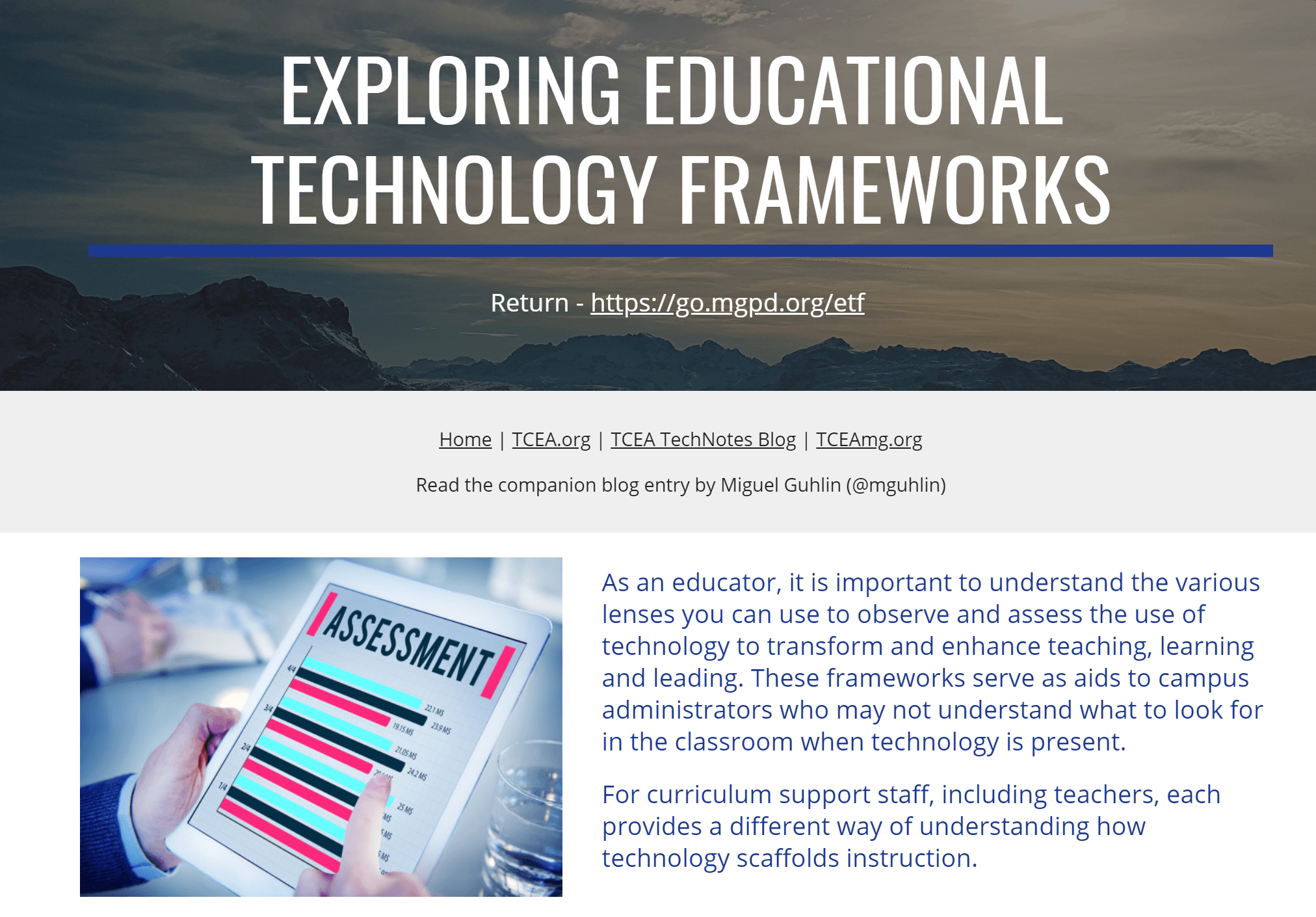
These components are critical to success. Coaches may need to bring in an educational framework.
You may also need to use something like Willard Daggett’s Rigor and Relevance (more) framework. Use a research-backed edtech framework (you can find several online at this site).
In the final segment of this series, we’ll continue our exploration of action steps and you will get suggestions for digital tools that align to HES instructional strategies.




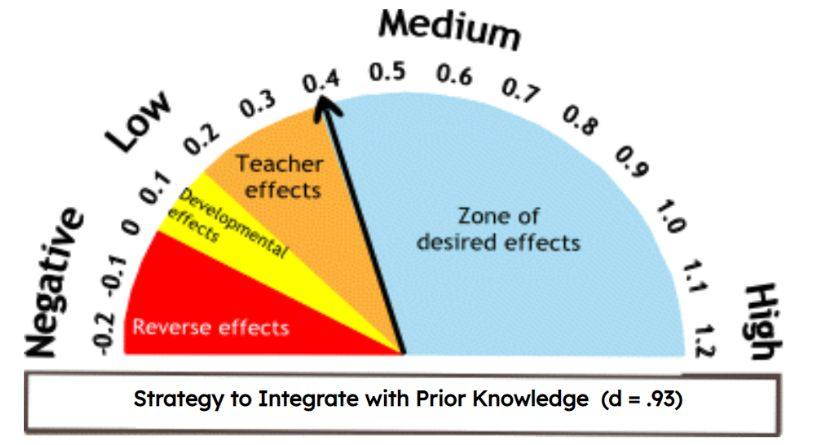
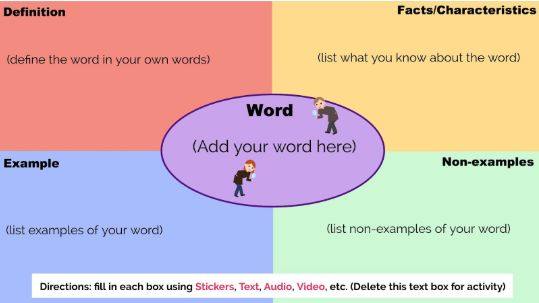

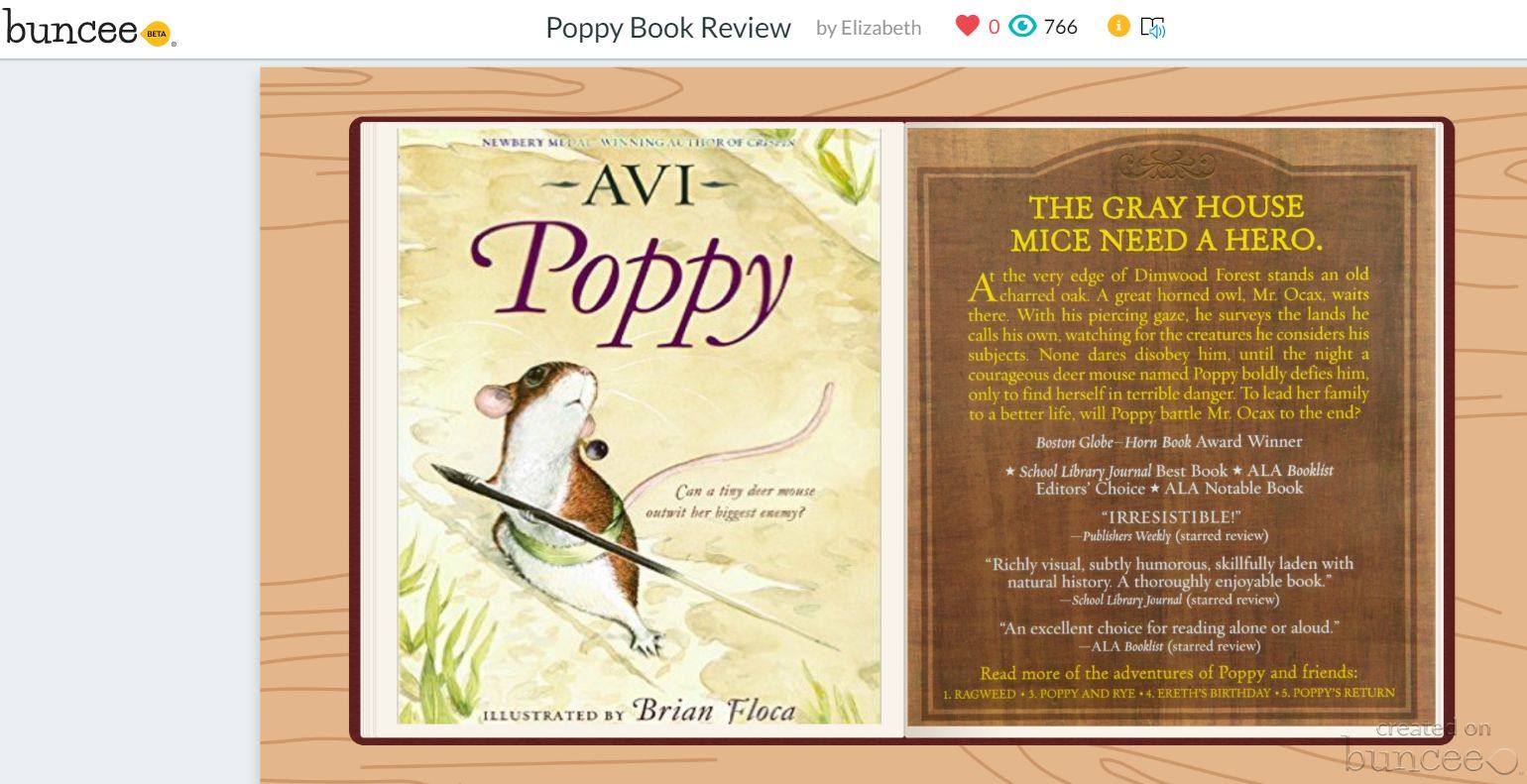

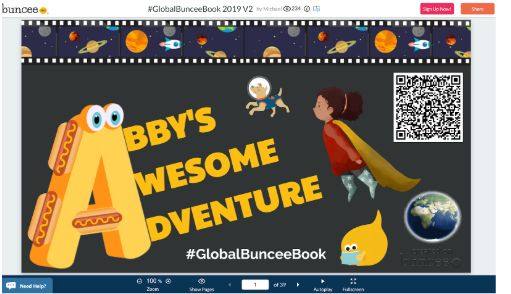





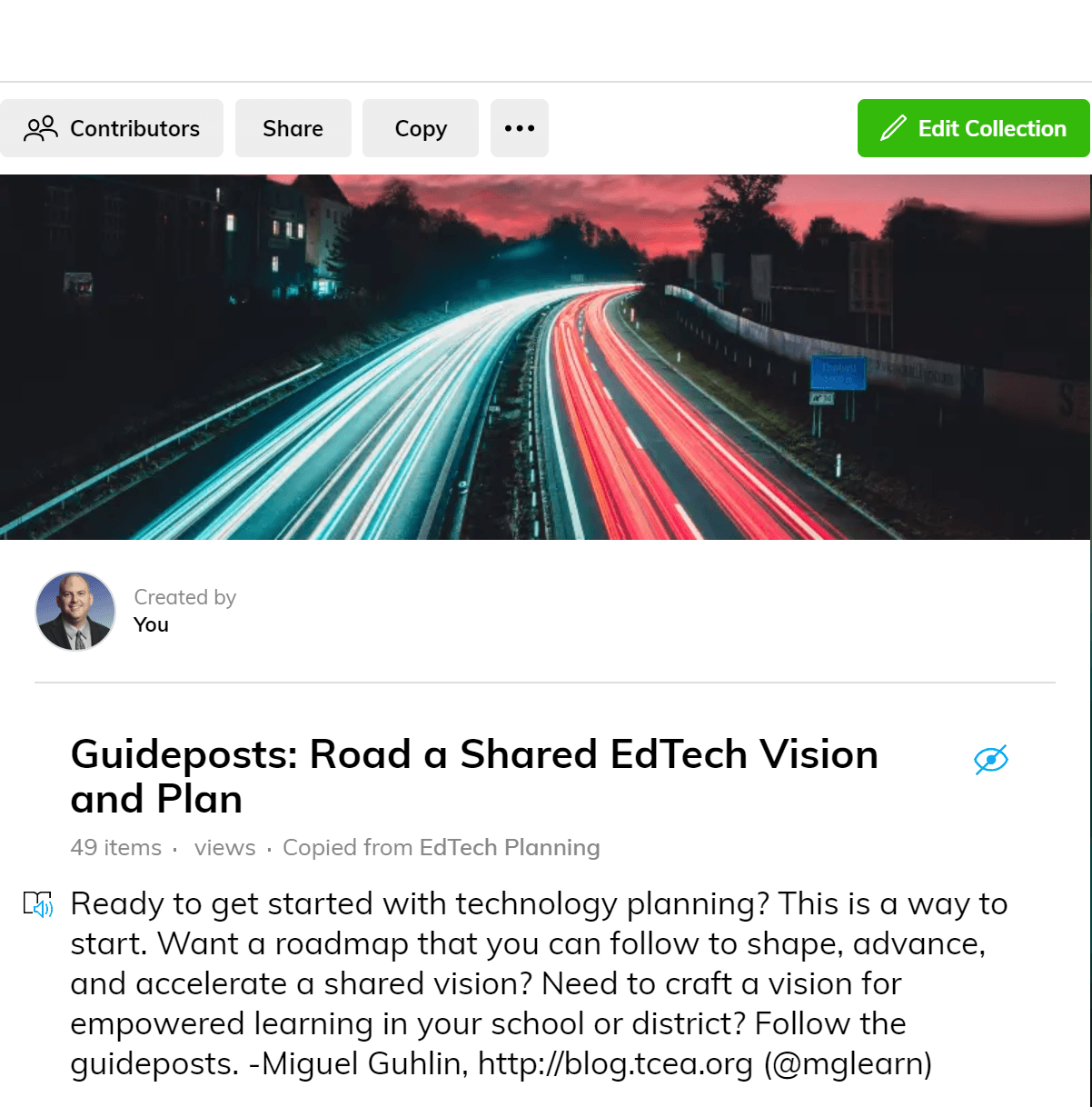 As you might imagine, navigating the guideposts may be difficult. But it can be easier if you remember what your role in shaping an ed tech vision and plan can be. Rather than advocating for unproven innovations, empower people to see a way ahead that research supports. In that way, you make possible a learning journey for all stakeholders.
As you might imagine, navigating the guideposts may be difficult. But it can be easier if you remember what your role in shaping an ed tech vision and plan can be. Rather than advocating for unproven innovations, empower people to see a way ahead that research supports. In that way, you make possible a learning journey for all stakeholders.


